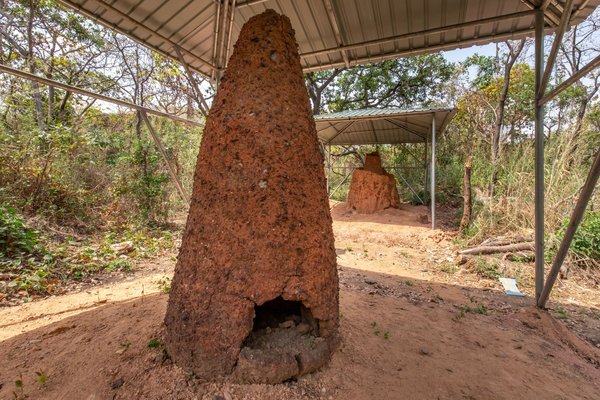Togo
Sites de la métallurgie ancienne du fer de Bassar
The Bassar Ancient Iron Metallurgy Sites comprise archaeological sites related to iron production in 15 villages. They date from the 5th century BC to the middle of the 20th century AD. The remains include blast furnaces, slag heaps, and mines.
Site Info
Official Information
- Full Name
- Sites de la métallurgie ancienne du fer de Bassar (ID: 6603)
- Country
- Togo
- Status
-
On tentative list 2021
Site history
History of Sites de la métallurgie ancienne du fer de Bassar
- 2023: Preliminary Assessment
- .
- 2023: Upstream Process
- .
- 2021: Added to Tentative List
- Added to tentative list
- Type
- Cultural
- Criteria
Links
- UNESCO
- whc.unesco.org
All Links
UNESCO.org
- whc.unesco.org — whc.unesco.org
Community Information
- Community Category
- Secular structure: Factories and industry
Travel Information
Recent Connections
News
No news.
Recent Visitors
Visitors of Sites de la métallurgie ancienne du fer de Bassar
Community Reviews
Show full reviewsChristravelblog
Sites de la métallurgie ancienne du fer de Bassar
Sites de la métallurgie ancienne du fer de Bassar (On tentative list)

Yes this is for me a TWHS that has a good chance of inscribing. I loved it. Getting to Bassar is kind of out of the way, even in a small country as Togo. The easiest is to get there is from Sokodé (which is almost a day from Lomé). Visit and go through norther route to Kara to visit the only WHS and more TWHS. Make sure to leave around 9-10AM so you will be in Kara in the late afternoon. In the north of Togo there are plenty of police/military checkpoints which can slow you down. Going from Sokodé you also go through the Parc national Fazao-Malfakassa (allthough at the tip) but enough to tick it off, not to see elephants though.
The Bassar area has a history of ironworking dating back to the 5th century BC and continued until the 20th century due to its rich iron deposits. The local communities developed an interesting technological process to extract iron. The metal furnaces of Nangbani are the best site to visit, with dozens of furnaces that functioned in a unique way. The furnaces were cylinders with an inner heat-resistant layer and outer soft layer, filled with iron ore and dry wood, heated for 2-3 days until the iron dripped to the bottom. The iron was then sold to distant traders.
There is an option to stay overnight in Bassar, but honestly, there isn't much more in the area to do. There are more furnaces and it …
Keep reading 0 comments
